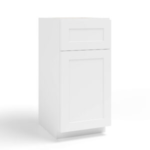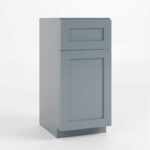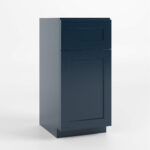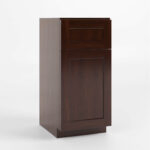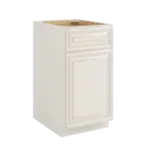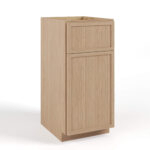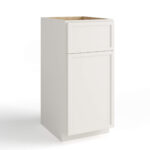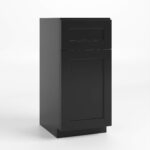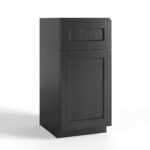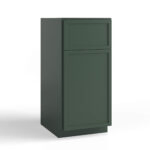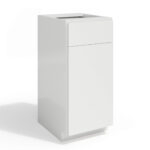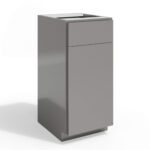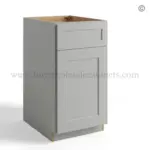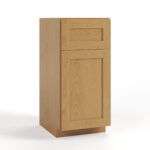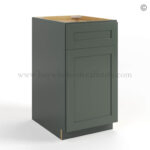BWC Basics: How Long Do Kitchen Cabinets Last?
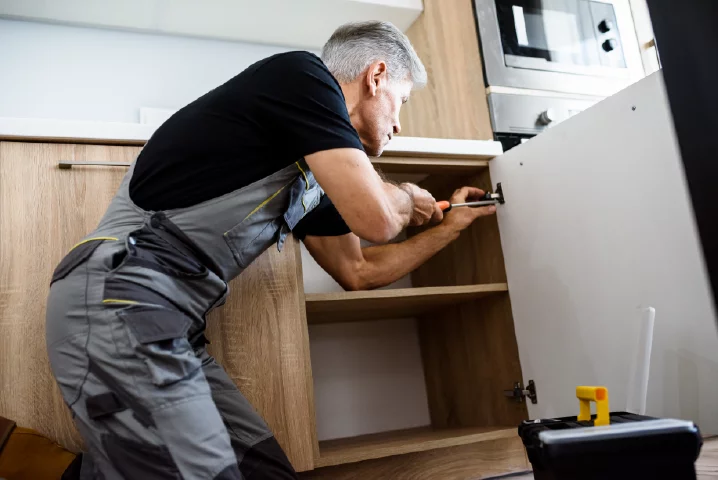
Whether you’re embarking upon a kitchen remodel journey or recently purchased a home and are curious about how long you can wait to remodel, you may be wondering, “how long do kitchen cabinets last?”
Although there is a general ballpark answer, the truth is that there are various factors that can change a kitchen cabinet’s life expectancy. Kitchen cabinets can last anywhere from ten to sixty years, so it’s a worthwhile venture to figure out where on the spectrum your cabinets fall. In this blog, we’ll explain what factors affect the lifespan of a cabinet and how you can tell if it’s time for a new look.
What Affects Cabinet Lifespans?
Everything from the initial construction of the cabinet to its surrounding environment has the potential to change how long a cabinet will last. Below is a list of some of the most common factors that influence cabinet life expectancy.
Cabinet Material
Cabinets come in many materials, ranging from cheap and poorly made to nearly indestructible. On the lower end of materials are medium-density fiberboard (MDF) and particleboard. Because these materials are not solid, they tend to be more prone to moisture issues.
On the other hand, materials like solid wood are less susceptible to swelling, cracking, or molding, and materials like stainless steel will likely outlast almost everything else in your kitchen.
Moisture Exposure
One of the biggest issues for kitchen cabinets, in general, is moisture and water damage. Cabinets directly above the oven and stove, or directly beneath the sink, will likely face many spills of sauce and soapy water or sprays of steam over the course of their lifetime. Because these cabinets face more water-based wear-and-tear than their bathroom or closet counterparts, they might not last as long.
Frequency of Use
Like the last point, repetitive motions can reduce a kitchen cabinet’s lifespan much more quickly than other cabinets. Constant opening and closing of cabinets can lead to chips in the paint, damage to stains or veneers, and general roughage to hardware. This might result in cabinets that don’t close properly or that simply no longer look good as new.
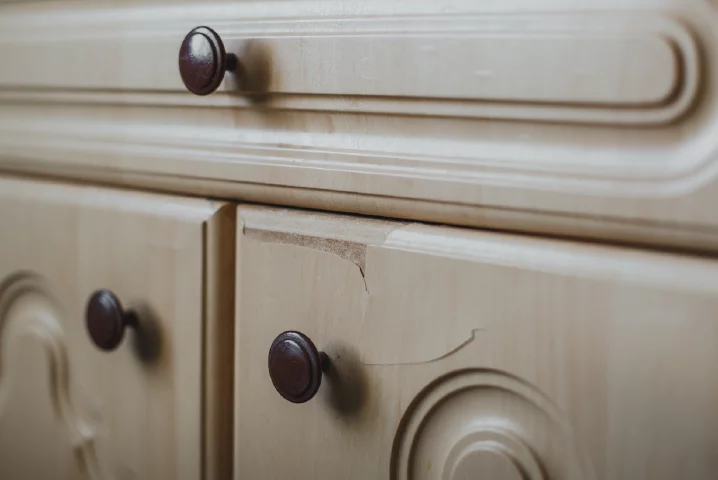
How Long Should Kitchen Cabinets Last?
While the factors above make it difficult to ascertain any specific time frame, they can help determine a smaller range for your cabinet’s lifespan. For example, a cabinet made of plywood or MDF may only last ten years in a kitchen because of the materials’ susceptibility to moisture. On the other hand, solid hardwood cabinets can easily last up to twenty-five years because of the material’s quality.
Furthermore, if you own a vacation home that isn’t in use for most of the year, your cabinets will likely last much longer than they would in a home that’s used year-round. Similarly, under-the-sink cabinets in a kitchen with a dishwasher might last longer than cabinets in a kitchen where the dishes are being hand-washed right above them each night, and cabinets in a humid area will need replacing quicker than cabinets in an arid environment.
All in all, depending on the many factors we’ve outlined above, your cabinets are likely to last, on average, anywhere from 15 – 45 years. But how do you know when that time has come?
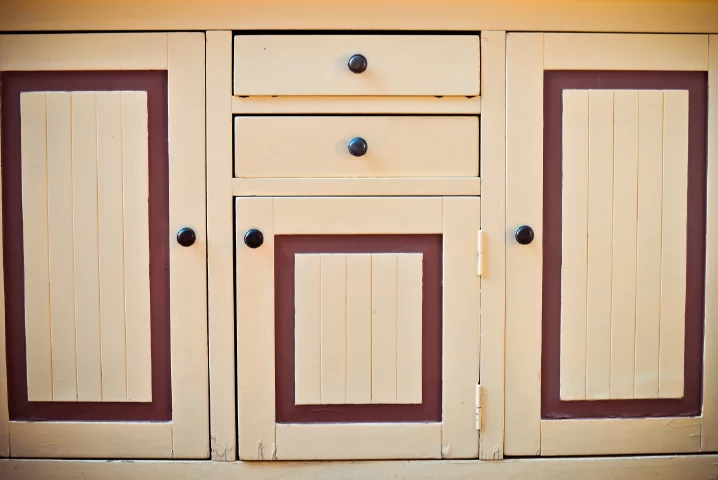
Signs That It’s Time to Replace Your Cabinets
Oftentimes, cabinets in need of replacing will externally display signs of wear, but other times, the damage may be internal. Here are some signs that it’s time to replace your kitchen cabinets.
Swelling or Cracking
If your cabinets are made of wood, whether they’re solid wood or some kind of fiberboard, the chances are that they have been absorbing and releasing moisture on and off for the whole time you have had them. Even in climates where it isn’t particularly humid, wood contracts and expands with the seasons. While this is normal, the wood will eventually begin to crack after many years of this process. If you notice any cracking or severe swelling, your cabinets are showing signs that they’re on their way out.
Mold
One of the most severe signs that your cabinets should be kicked to the curb is mold, and it can also be one of the most discreet. While many other signs show up most often on the cabinet door, mold shows up most frequently inside the cabinet boxes. If you have the contents of your cabinets memorized or even just know the gist, you probably don’t inspect the interior of your cabinets often. That being said, you should check inside your cabinets semi-regularly to ensure that there isn’t any mold or soft spots in the wood.
Loss of Function
Loss of function sounds extreme, but oftentimes, it’s something that you and your family become accustomed to without even noticing. If your cabinets no longer close all the way, or they’ve become stiff when you try to open them, or any number of functional difficulties that may seem like little quirks, it’s time to replace them.
Visual Appearance
After many years, the signs of constant use can become more apparent. Whether it’s chipped, discolored, or faded paint; peeling laminate; scuffed corners or pulls; or any number of other visual defects, your cabinets will begin looking worn and weary after too long. Not only is this an eyesore, but it can actually be easier to replace or reface your cabinet doors than to refinish or fix up your existing ones.
Other Signs
You may feel that your cabinets are in need of replacement even if you haven’t noticed any of the above signs, and that’s okay! Sometimes, even if your cabinet doors are physically intact, they may be out of style or no longer fit your personal aesthetic. If you no longer like your cabinets, there are easy ways to replace or repair them that don’t involve gutting your entire kitchen. If the cabinet itself is intact, you can replace the cabinets’ doors in what’s called refacing.
High-Quality Cabinets at Buy Wholesale Cabinets
As you can see, there are many factors to take into account when determining how long kitchen cabinets last. That being said, there are a few key takeaways to remember, such as which materials will help your cabinets last a long time—like solid wood and UV-coated interiors.
For high-quality cabinets that are built to last, check out the Buy Wholesale Cabinets catalog. All of the cabinets that we offer are made of solid wood—never particleboard or MDF—and feature UV-coated interiors, dovetail drawers, soft-close features, and many more artisanal details. Contact us today for a free quote!
